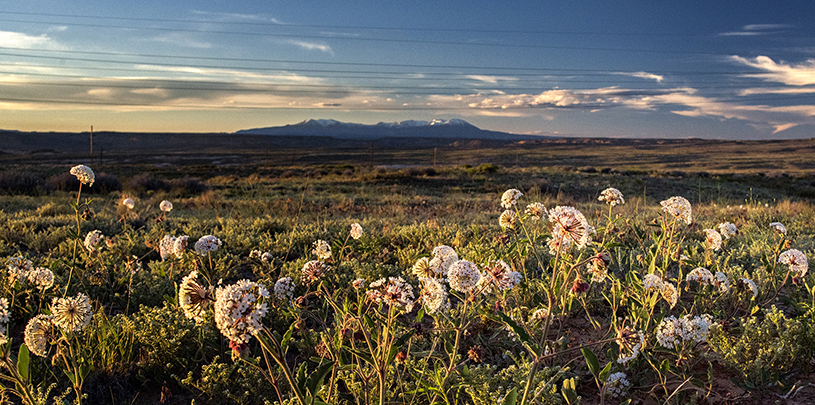
 by Tim Peterson, Cultural Landscapes Director
by Tim Peterson, Cultural Landscapes Director
After ample snow and a wet spring, it's a record wildflower year in the Bears Ears cultural landscape! It’s a marked change from last spring, when long-term exceptional drought gave us dusty winds and dry stalks. Now, the desert has sprung back to life with healing and life-giving moisture, and this year, just about everything that can produce a flower is blooming. The sights and smells are overwhelming.
Someday, you might be able to smell the flowers through the internet, but until then, you'll have to imagine the sweet, heavenly perfume of sand verbena and cliffrose. With continuing rain and cool temperatures, the plants bloom on, and we're thrilled to be able to chase the flowers up in elevation all summer!
Now is a great time to visit. If you’d like to identify species named in President Obama’s proclamation designating Bears Ears National Monument, download and carry this guide with you on your explorations.

Bananna Yucca (Yucca baccata). TIM PETERSON.

Mountain pepperweed (Lepidium montanum). TIM PETERSON.

Smallflower fishhook cactus (Sclerocactus parviflorus). TIM PETERSON.

Badlands mule-ears (Scabrethia scabra). TIM PETERSON.

Prickly pear (Opuntia sp.). TIM PETERSON.

Colorado four o’clock (Mirabilis multiflora). TIM PETERSON.

Globemallow (Sphaeralcea sp.). TIM PETERSON.

Sego Lily (Calochortus nuttallii). TIM PETERSON.

Cliffrose (Purshia stansburiana) & thrift mock goldenweed (Stenotus armerioides). TIM PETERSON.

Four-nerve daisy (Tetraneuris acaulis). TIM PETERSON.
Utah voters strongly support national monuments in general, and Bears Ears and Grand Staircase-Escalante in particular, a new poll shows.
Read MoreA small victory in the legal case challenging Daneros uranium mine, near Bears Ears National Monument.
Read MoreBears Ears petroglyph panels and cultural sites protected by new proposed management plan.
Read More